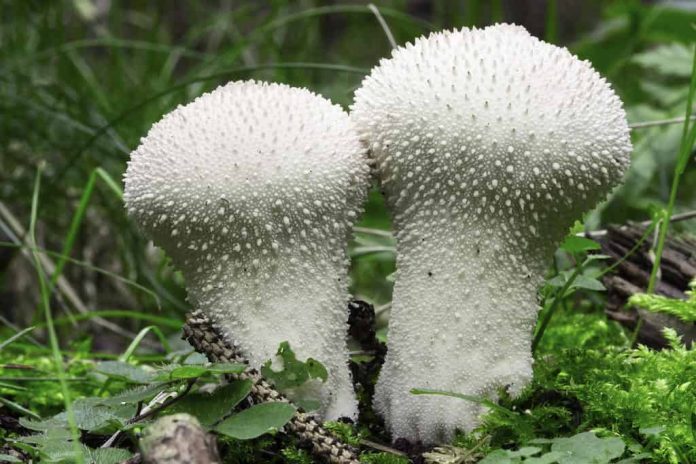Puffball mushrooms are a unique group of fungi that are quite common in the UK. Known for their distinctive spherical shape and lack of an exposed gill structure, puffball mushrooms can be a delightful find for foragers. This article will explore various aspects of puffball mushrooms found in the UK, including identification, edibility, habitat, and more.
Identification of Puffball Mushrooms
- Cap: Rounded or spherical, often white, tan or brown.
- Gills: Lacking exposed gills, they appear solid and white inside when young.
- Stem: Some species have a noticeable stem, while others may not.
- Spore Print: Varies by species, often brown.
Edibility and Culinary Uses
- Edible Species: Many puffballs are edible when young and the flesh inside is solid white.
- Culinary Uses: They can be sliced and fried, used in stews, or as a meat substitute.
Caution and Avoidance of Toxic Look-alikes
- Avoid Old Puffballs: They become inedible as they age, turning yellow, then brown, and finally releasing spores.
- Beware of Look-alikes: Some immature toxic mushrooms like the Death Cap may appear similar to puffballs. Always slice them open to ensure the inside is solid and white.
Habitat and Distribution in the UK
- Location: Grasslands, meadows, woods, and even gardens.
- Season: Late summer to early autumn.
Popular UK Puffball Species
- Common Puffball (Lycoperdon perlatum): Widespread across the UK.
- Giant Puffball (Calvatia gigantea): Known for its impressive size, it can be found in pastures and meadows.
Conservation Consideration
- Sustainability: Always forage responsibly and never take more than you need.
- Legal Restrictions: Be aware of local laws related to foraging.
Conclusion
Puffball mushrooms are fascinating fungi that offer both a culinary delight and natural intrigue. For those interested in exploring the world of puffballs in the UK, proper identification and caution are paramount. Engaging with local mycological societies and following responsible foraging guidelines can enhance the experience and ensure safety.
FAQ
Q: How can I tell if a puffball mushroom is too old to eat?
A: If the inside is no longer solid white and has changed color or become powdery, it’s too old to eat.
Q: Are there any medicinal properties associated with puffball mushrooms?
A: Historically, some puffball species were used for medicinal purposes, such as wound healing, but modern research is limited.
Khalid Irfan is a Fitness expert who enjoys spending time in gym. He also enjoys being in the outdoors and exploring new opportunities whenever they arise as well as researching new topics to expand his horizons.

